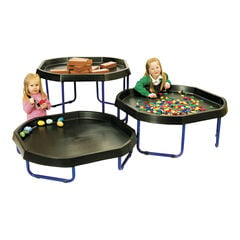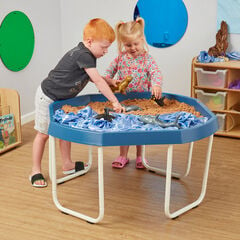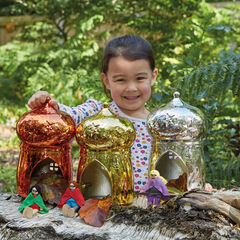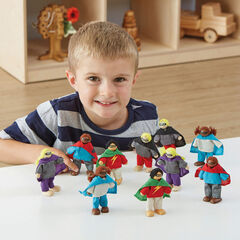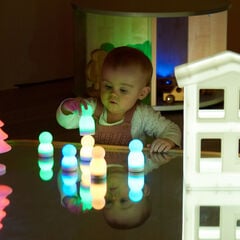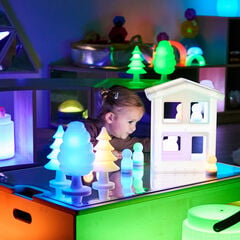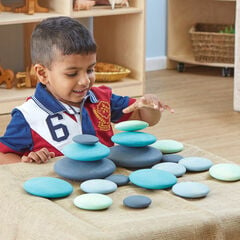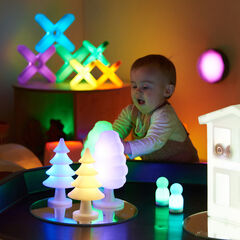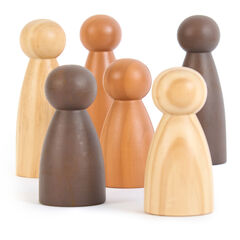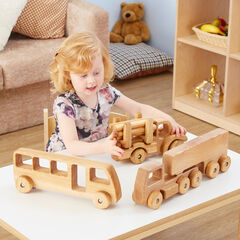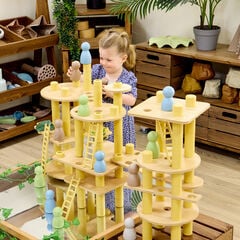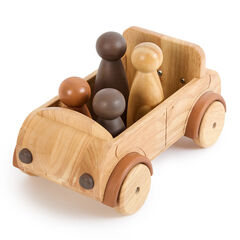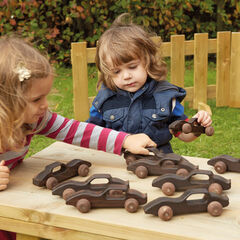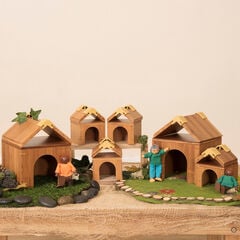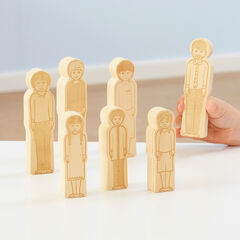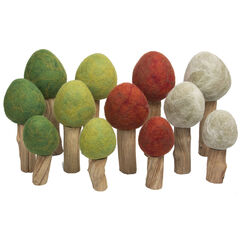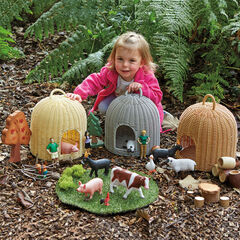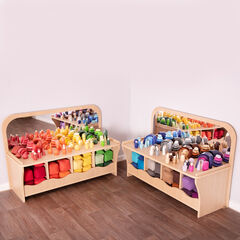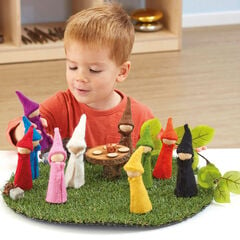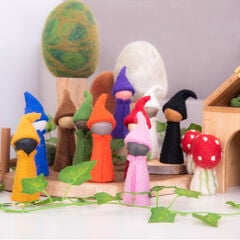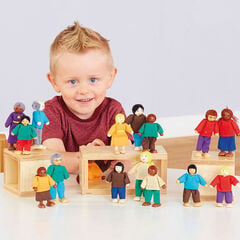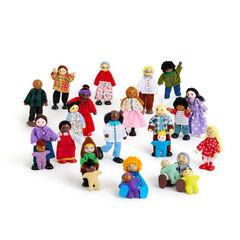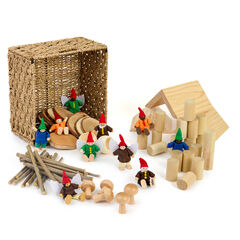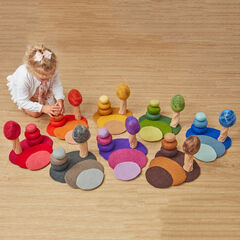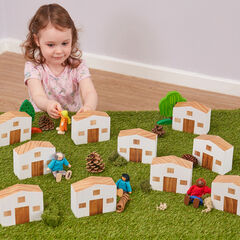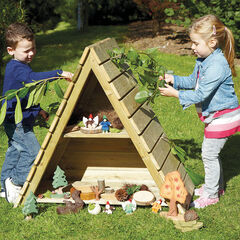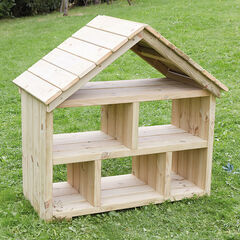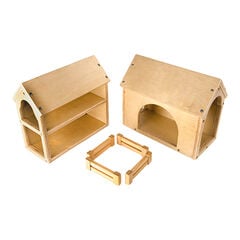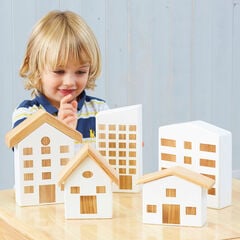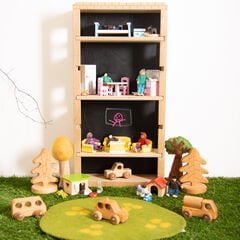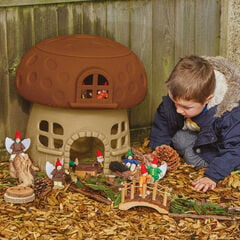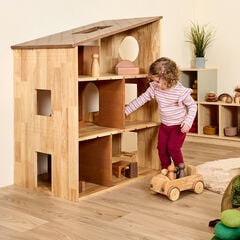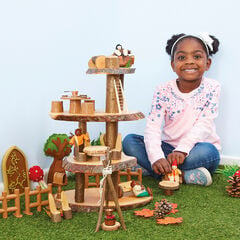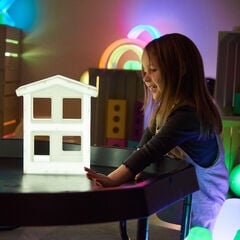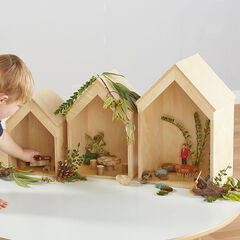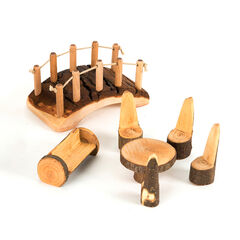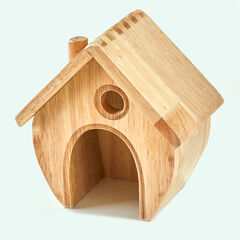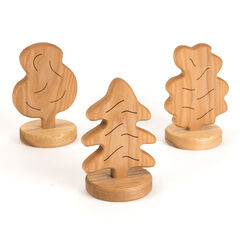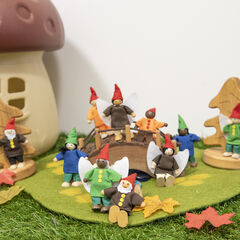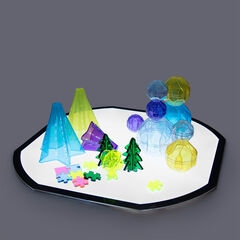Small World Play is an important part of our provision at Woodlands Nursery and Forest School. Many skills can be developed through this type of play. Before moving on to the skills that can be developed, we will explore the types of small world resources that we use in our nursery to give children the best learning experiences.
Types of Small World Resources to Consider
When thinking about small world set-ups, we tend to keep them very open-ended, but the resources we always try to make available include:
Miniature Figures
Small toys, dolls, or figures that represent people animals, or characters.
Scenes or Environments
These can include natural elements (like sand, water, trees and rocks), or thematic settings such as a farm, zoo or underwater world. Use the Small World Tuff tray Mats as a starting point for those children who need a little support when creating and building different scenes.
Props and Accessories
Resources such as vehicles, buildings, animals, and furniture that help bring the miniature world to life.
Skills and Learning Developed Through Small World Play
We adapt small world play for the different age groups within our setting, but we find it especially beneficial for children in the early years. We find that this type of play can be linked to almost all 7 areas of learning in the EYFS. At Woodlands, we find that it develops and supports many skills. Some of these include:
Expanding Vocabulary
As children create and interact with small worlds, they are encouraged to use new words to describe their environments, actions, and characters, for example, names of the animals, objects and emotions.
Encourages Storytelling
Children naturally create narratives around their miniature worlds. This helps develop their storytelling abilities and understanding of story structure (beginning, middle and end).
Supports Social Communication
Small world play can be a collaborative learning experience, encouraging dialogue, turn-taking, and cooperative play. During their play, children are developing their social skills such as listening, negotiating and conversing.
Develops Role Play
Children use their imagination when taking on different roles in their small world play which boosts their creative thinking. They might pretend to be a farmer, doctor, or explorer. This allows them to explore different perspectives and scenarios.
Problem Solving
As children engage in role play, they develop problem solving skills by figuring out how characters might solve challenges within their small world.
Grasping and Coordinating
The actions involved in small world play, such as pushing vehicles, picking up, arranging, and moving smaller items, help strengthen hand-eye coordination and finger dexterity. Handing small figures, props, and materials helps develop fine motor skills needed for future tasks such as dressing and writing. Activities like placing figures in specific spots, moving objects, and dressing dolls all require precise hand movements. Consider the younger children in your setting who may still developing fine motor skills. Do you have larger resources that they can grab, grasp and hold?
For more information on making small world play more accessible for babies and toddlers, read our blog, ‘Small World Play Goes Large’.
Empathy and Understanding
By taking on roles in small world play, children can act out different emotions and situations, helping them to understand and empathise with the feelings of others. They might simulate caring for animals, helping someone in need, or resolving a conflict.
Self-Regulation
By creating different scenarios and playing through them, children can express and process their own feelings and thoughts. They might create stories where they are comforting a sad character, or older children might communicate how they are feeling and what they are experiencing by building their own reality. Small world is more than just play, it can help children to better understand how they are feeling and how to regulate their own emotions. If you want to find out more about how children can use small world to express their feelings and emotions, read the blog, ‘Build a world – A Healing World’ by Beccie Hawes.
Sequencing and Structure
Small world play often involves creating a sequence of events or taking a series of steps to solve a problem in a story. Whilst doing this, children are also developing cognitive skills such as sequencing, memory, and logical thinking.
Spatial Awareness
Manipulating objects and arranging them in a physical space helps children develop an understanding of spatial relationships and concepts such as position (e.g. in front of, behind, besides, on top of) or size.
Small World Play Prepares Children for the Big World
As you can see, small world play develops many skills across many different areas of learning. However, these skills are not just needed for learning, but for life itself. It is important that our children can problem solve, understand others by stepping into another person’s shoes, and be able to express themselves through their thoughts and ideas. So, what are we waiting for, let’s give our children the opportunity to practise these key skills in small world play, preparing them for life in the future!
To find out more about small world play, read the blog, ‘The Importance of Small World Play in Early Years Education’.
Many thanks to Deanna Lemann, Nursery Manager at Woodlands Nursery and Forest School, for sharing this blog with us.

















